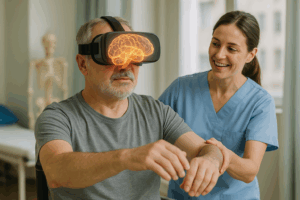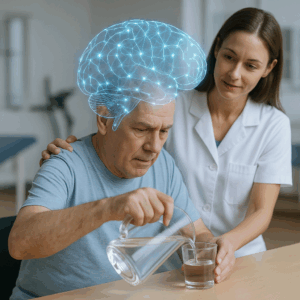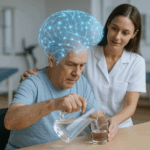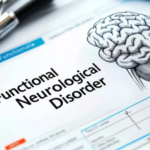1. Introduction: Why This Topic Matters
“Recovery from stroke doesn’t rely solely on repairing damaged tissue—it’s about retraining the brain to rewire itself.”
Stroke remains a leading cause of adult disability globally. According to the World Health Organization (WHO), approximately 15 million people experience a stroke annually, with about 5 million left permanently disabled. The resultant impairments—including hemiparesis, aphasia, cognitive deficits, and spasticity—were traditionally considered largely irreversible beyond a narrow recovery window.
However, contemporary neuroscience has challenged this deterministic view. The discovery of neuroplasticity—the brain’s intrinsic ability to reorganize neural pathways, form new synaptic connections, and redistribute functions to unaffected brain regions—has ushered in a transformative era in stroke rehabilitation.
Neuroplasticity posits that functional recovery post-stroke is not strictly bound to the original site of injury. Instead, with appropriate and timely therapeutic stimuli, both cortical and subcortical regions can adaptively remodel, enabling partial or even near-complete restoration of function. This paradigm has profound clinical implications, shifting stroke rehabilitation toward more dynamic, interactive, and prolonged engagement strategies.
As Norman Doidge, MD, aptly stated in The Brain That Changes Itself, “The brain is not static—it rewires itself every day.” Every 40 seconds, someone suffers a stroke, and for survivors, recovery often hinges on this central principle: neuroplasticity.
2. Emerging Trends & Technological Shifts in Neuro-Rehabilitation
The integration of emerging technologies with principles of neuroplasticity is redefining stroke rehabilitation. These innovations facilitate targeted neural engagement, optimize therapy intensity, and expand accessibility. Below are the most impactful trends:
2.1 Virtual Reality (VR) Rehabilitation
- Mechanism: VR creates immersive, gamified environments that simulate real-life tasks.
- Benefits:
- Enhances patient engagement and compliance.
- Stimulates mirror neuron systems and multisensory integration.
- Offers real-time visual and proprioceptive feedback.
VR has shown significant efficacy in improving balance, upper limb coordination, and attention in stroke survivors (Laver et al., 2017).

2.2 Robotic Exoskeletons and Assistive Devices
- Mechanism: Robots provide consistent, high-repetition, and intensity-controlled movements.
- Benefits:
- Facilitates task-specific training.
- Promotes symmetrical limb usage and normalized gait patterns.
- Enables kinematic and kinetic data acquisition for progress tracking.
Randomized trials support robot-assisted therapy for improving arm and gait functions, particularly in the subacute stage (Mehrholz et al., 2018).
2.3 Brain-Computer Interfaces (BCIs)
- Mechanism: BCIs convert brain signals (EEG, fNIRS) into device commands, enabling patients to control external objects.
- Benefits:
- Facilitates motor imagery and intention-based therapy.
- Enhances recovery in patients with severe paralysis.
- Reinforces sensorimotor coupling.
Pilot studies demonstrate BCI-mediated therapy can improve motor scores in chronic stroke (Ang et al., 2015).
2.4 AI-Driven Neurofeedback and Predictive Modeling
- Mechanism: Utilizes real-time neural data to adapt therapy dynamically using machine learning.
- Benefits:
- Personalizes treatment to individual cortical activation patterns.
- Tracks neuro-engagement to optimize therapy dosage.
- Informs clinical decision-making via predictive analytics.
Preliminary research suggests improved cortical re-engagement and patient outcomes with neuroadaptive systems.
2.5 Task-Oriented and Constraint-Based Therapy Models
- Examples: Constraint-Induced Movement Therapy (CIMT), Bilateral Arm Training, Mirror Therapy.
- Benefits:
- Drive use-dependent plasticity.
- Encourage real-world functional gains.
- Emphasize meaningful, contextually relevant motor patterns.
Task-specific practice remains a cornerstone of neuroplastic rehabilitation per American Stroke Association guidelines.
These technological adjuncts, when applied judiciously by skilled clinicians, amplify neural remodeling and restore lost functions more effectively.
3. Key Challenges & Gaps in Practice
Despite promising developments, clinical application of neuroplasticity-informed therapies faces several systemic and operational obstacles:
3.1 Access and Infrastructure Disparities
- Most advanced technologies are concentrated in urban tertiary care centers.
- Cost and logistical barriers preclude their use in low-resource settings.
- Inadequate insurance coverage limits session frequency and duration.
3.2 Clinical Training Deficits
- Rehabilitation professionals often lack formal training in neuroplasticity and neurotechnology.
- Incorrect usage may diminish effectiveness or lead to counterproductive outcomes.
3.3 Lack of Standardized Protocols
- Heterogeneity exists in intervention timing, duration, and modality.
- Absence of consensus-based clinical pathways restricts uniform implementation.
3.4 Time-Sensitive Nature of Plasticity
- The highest neuroplastic potential lies within the first 1–3 months post-stroke.
- Delayed referrals and initiation of therapy result in missed therapeutic windows.
3.5 Individual Variability
- Factors such as age, stroke severity, lesion location, cognitive status, and comorbidities influence plasticity.
- Standardized treatment protocols fail to accommodate patient-specific profiles.
Addressing these challenges demands a concerted effort encompassing policy reform, curriculum updates, interdisciplinary collaboration, and digital health solutions.
4. Actionable Takeaways for Professionals
4.1 Initiate Early, Optimize Often
- Begin neurorehabilitation within 72 hours when medically stable.
- Reassess frequently to tailor interventions to evolving neurophysiological responses.
4.2 Encourage Repetition with Relevance
- Emphasize meaningful, functional tasks (e.g., dressing, reaching).
- Promote massed practice with graded difficulty.
4.3 Incorporate Multisensory Modalities
- Combine proprioceptive, auditory, and visual inputs during motor tasks.
- Leverage feedback-rich environments to strengthen sensorimotor loops.
4.4 Use Technology as an Extender, Not a Replacement
- Employ robotic, VR, and BCI tools as adjuncts.
- Retain clinical judgment and patient-centered goal setting as central pillars.
4.5 Foster Motivation and Participation
- Set achievable goals and celebrate progress.
- Use motivational interviewing and caregiver involvement to sustain engagement.
5. Hope Through Brain Adaptability
Neuroplasticity is not a panacea, but it is a powerful enabler of recovery. Every therapeutic repetition, sensory cue, and volitional movement has the potential to reorganize neural networks and awaken dormant pathways.
As we progress into the era of personalized rehabilitation, the focus must remain on combining scientific insight with empathetic care. The future lies in synergizing innovation with equity, technology with touch, and neuroscience with nuanced clinical wisdom.
Recovery after stroke is no longer a question of if—but how far can we go.
References
- Laver KE, Lange B, George S, et al. Virtual reality for stroke rehabilitation. Cochrane Database Syst Rev. 2017;(11):CD008349.
- Mehrholz J, Pohl M, Platz T, Kugler J, Elsner B. Electromechanical-assisted training for walking after stroke. Cochrane Database Syst Rev. 2018;(10):CD006185.
- Ang KK, Guan C, Phua KS, et al. Brain-computer interface-based neurorehabilitation in chronic stroke patients. Ann Neurol. 2015;77(3):464-475.
- Dobkin BH. Rehabilitation after stroke. N Engl J Med. 2005;352(16):1677-1684.
- Krakauer JW. Motor learning: its relevance to stroke recovery and neurorehabilitation. Curr Opin Neurol. 2006;19(1):84-90.
- Langhorne P, Bernhardt J, Kwakkel G. Stroke rehabilitation. Lancet. 2011;377(9778):1693-1702.
- Ward NS, Cohen LG. Mechanisms underlying recovery of motor function after stroke. Arch Neurol. 2004;61(12):1844-1848.
- Nudo RJ. Recovery after brain injury: mechanisms and principles. Front Hum Neurosci. 2013;7:887.







